Notes
Combat Photographer’s Last Photo a Resounding Media Failure
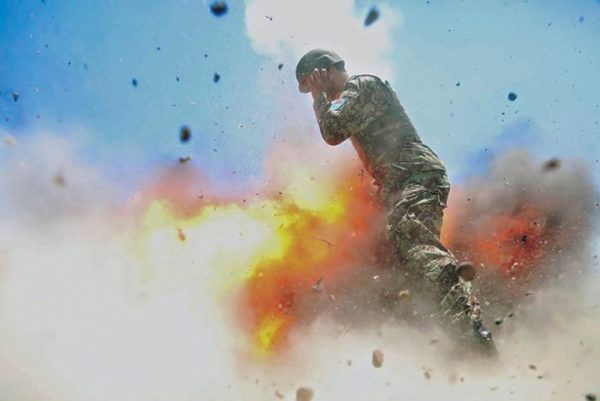
Last week, western media and what seemed like most of the internet was irresistibly drawn to the cataclysmic last photograph of a U.S. Army photographer, Hilda Clayton. She was documenting a joint U.S.-Afghan military training exercise in 2013 when an accidental mortar explosion killed her, an Afghan photographer she was training, and three other Afghan soldiers. Clayton’s last photo and the Afghan trainee’s last photo were both published in the May-June 2017 issue of the journal Military Review, dedicated this month to gender roles in military planning. You can see Clayton’s photo above, and the trainee’s photo just below. (As you read this post, I urge you to remember which is which.)
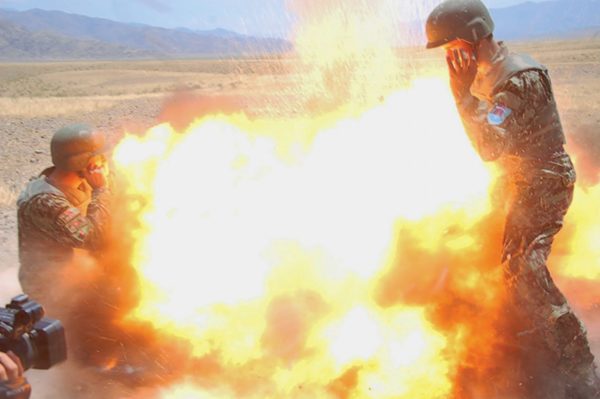
Not that anyone noticed, but the internet explosion caused by the two fateful photos generated its own share of journalistic shrapnel. For example:
The only context for the story, to the extent accompanying news stories or photo galleries supplied any, was based on the military’s own narrative. Twitter, of course — where the photo went viral — hardly offers any context at all.
Despite the Afghan fatalities, and the fact each country lost a photographer leaving a dramatic last image, the Afghans remain anonymous. Only the New York Times story even identified the Afghan photographer, and only by his first name — Tamim.
To explain the breakdown here, let’s start with the visual negligence and cultural disregard surrounding the photos, then move on to the failure to put the photos into a political, military or historical context. Shoddy editorial work combined with latent hegemony has resulted in media outlet after media outlet either mixing up the two photos, or just attributing both to the American.
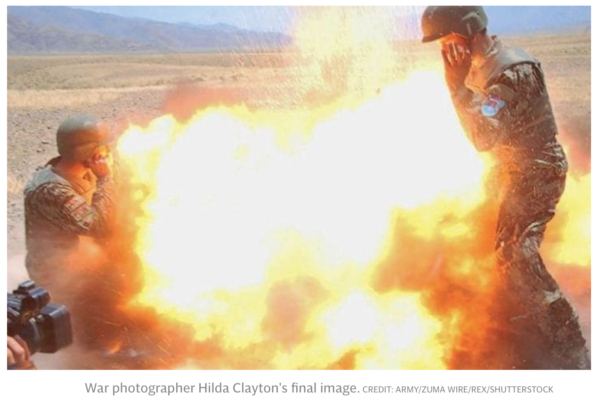
In the caption in this screenshot, you can see that the Telegraph story credits the Afghan photographer’s last photo to Clayton.
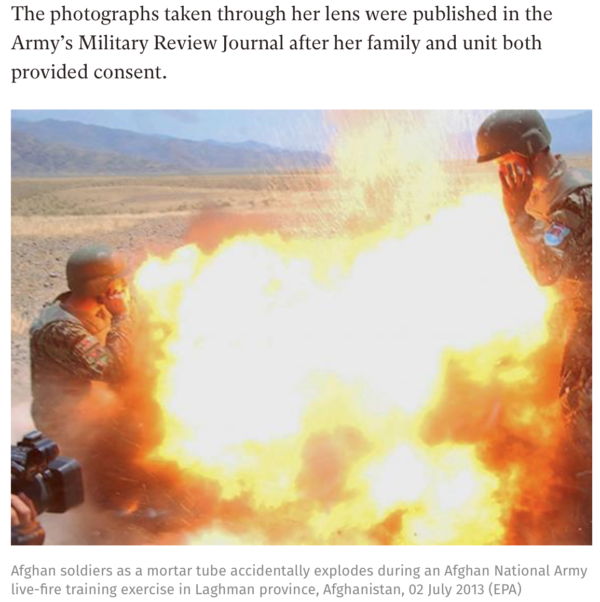
Though it refers to multiple photos, the Independent doesn’t even run Clayton’s photo in its article. Referring to both photos coming from her lens, it only runs the Afghani’s photo credited to the American.
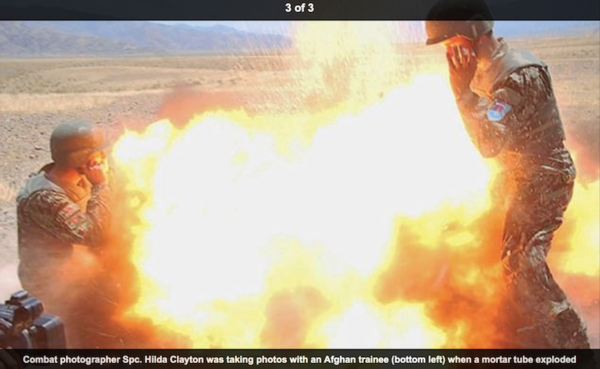
Not only does the Daily Mail attribute the Afghan photographer’s photo to Clayton (above), but the caption writer deems to point out that the Afghan photographer (the person who took the photo) somehow appears in the lower left.
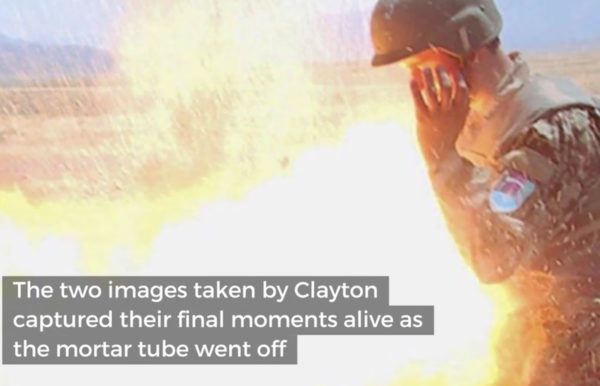
The Daily News gets it wrong also. Not only do they attribute the Afghan photo to Clayton but they do so in a callously sensationalized video with a techno-beat.
This is the last thing Army photog Hilda Clayton saw: a mortar tube exploding in Afghanistan in 2013 https://t.co/sDkvZzKwIP pic.twitter.com/RxUhx3fAOF
— Alex Horton (@AlexHortonTX) May 1, 2017
There were a dizzying number of tweets that repeated the error and attributed the Afghani’s photo to Clayton. The IBT Times embed the one above in its article.
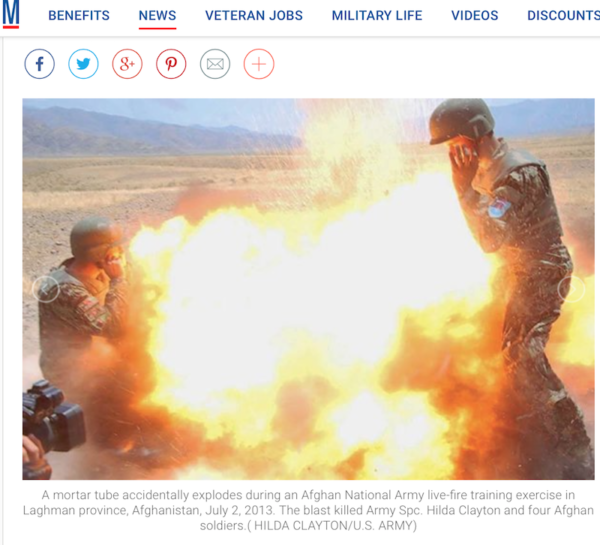
You would think America’s largest military and veteran membership organization would know better. But even Military.com got it wrong and dishonored the Afghani.
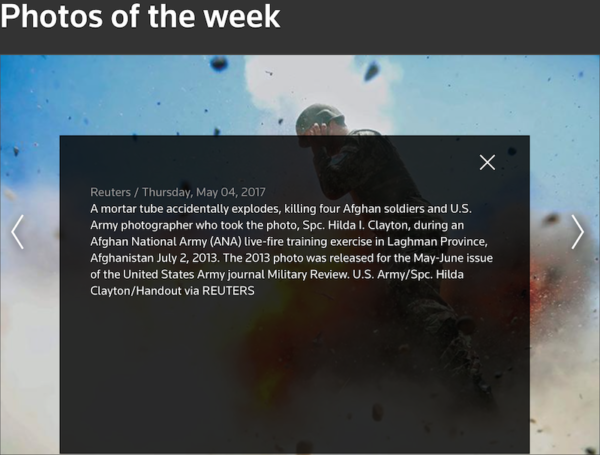
When startling imagery is published in “cheap to produce” news photo galleries, context is always an issue. The Reuters “Photos of the Week” feature published May 5th, for example, reduced the entire story to a caption attached to Clayton’s photo and the existence of the other photo or the death of the Afghan photographer isn’t even mentioned. The same is true in the Atlantic’s popular “Photos of the Week” feature as Clayton’s photo, #24, is reduced to eye candy.
There has been plenty of debate about the use, or overuse of the term, but I would qualify these photos as war porn. I say that because too many publishers couldn’t bother with the larger context or even the basic facts when they had the news cycle to contend with and these macabre and sensational photos to display. Instead, these suddenly employable four-year-old photos and their hasty circulation serve as an indictment of spectacle — just like the news and the pictures of the near nuclear-scale “mother of all bombs” did a few weeks back — when the corrosive war in Afghanistan remains otherwise invisible.
There are not just questions to be asked her, but hard questions.
Starting with Journalism 101, what is the news peg? What are the circumstances that make the event meaningful? Why are organizations like the New York Times and the Washington Post running four-year-old photos with hardly a shred of context? Maybe we have come to the point where serious reporting is so infused with a tabloid reflex that the question is hardly relevant anymore? Or perhaps the military information complex has so successfully ingrained itself in our information culture that it serves, by default, as the first and last word.
Given that the media deferred to the military to establish the context of the photographs (the primary source for that context in the NYT story is the managing editor of the military journal) how do we assess its explanation? If you read the Military Review story (on the last two pages of the PDF), it certainly places the tragic incident and these voyeuristic photos in a context. In establishing the background of the mishap, the Military Review article puts this framework front and center:
At the critical juncture of the war, when it was necessary for the ANA to increasingly assume responsibility for military actions, the story was not in the fighting but in the partnership that was necessary between U.S. and Afghan forces to stabilize the Afghan nation.
As telling as this is, and an obvious entry point for a more rigorous news treatment, these words are too inconspicuous. In 2013, President Obama declared that America had effectively achieved its goals in Afghanistan. On June 18, to be exact, America turned all security responsibilities back to Afghan security forces in conjunction with a U.S. withdrawal. But what about the fact that the job remained woefully unfinished? And what about the consequence, that Specialist Clayton was killed just two weeks later documenting a live munitions training the Afghans might not have been ready for?
If they were thinking more critically, I imagine The New York Times would have been all over the political aspect. Instead however, perhaps because the Military Times ultimately frames Clayton’s death as a gender story, the Times article superficially follows their lead and conflates the two. In contextualizing the photographs, the Times writes:
[Clayton’s] job came at a critical time in the U.S. military as it focused more on training Afghans and as American women were poised to play a larger role in combat deployments. It was the same year that the Pentagon said it would lift a ban on women serving in combat roles.
Pardon the expression but the gender issue is a straw man. Twelve weary years into America’s intervention in Afghanistan following the 9/11 attacks, it may have been time to go. But that shouldn’t obscure the key deficiency in the western political and military exit strategy — to empower the Afghanis to defend themselves. That being the case, the key question to ask is, if America and NATO had been more effective in executing the war, or in training the Afghans for even real continuity, would Clayton have been killed at all?
Beyond the morbid fascination with these adrenalized pictures and the photo editing FUBAR, that would have been a place to start.
— Michael Shaw
Photo: Spc. Hilda Clayton—U.S. Army/EPA. Caption: A mortar tube accidentally explodes during an Afghan National Army live-fire training exercise in Laghman Province, Afghanistan, on July 2, 2013. Photo 2: Tamim Caption: A mortar tube accidentally explodes 2 July 2013 during an Afghan National Army (ANA) live-fire training exercise in Laghman Province, Afghanistan. The accident killed U.S. Army Spc. Hilda I. Clayton and four ANA soldiers. Above: The photo taken by one of the Afghan soldiers at the moment of the explosion. Background: The photo was simultaneously taken by Spc. Clayton.

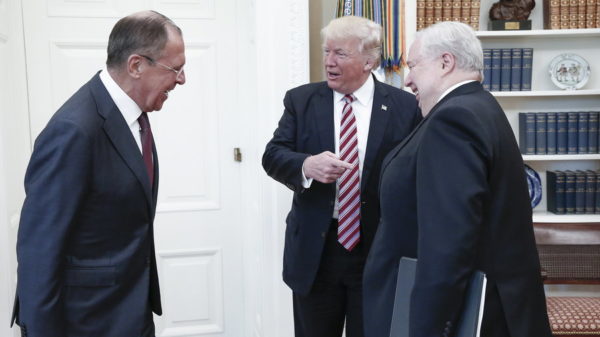
Reactions
Comments Powered by Disqus